Battle Of Saipan Order Of Battle on:
[Wikipedia]
[Google]
[Amazon]
 On 15 June 1944,
On 15 June 1944,
Admiral
: Admiral Raymond A. Spruance in heavy cruiser ''Indianapolis'' :: Joint Expeditionary Force (Task Force 51)
:: Vice Admiral
::: Vice Admiral
::: Vice Admiral Richard L. Conolly in amphibious command ship '' Appalachian''
 Expeditionary Troops (Task Force 56)
Expeditionary Troops (Task Force 56)
Lieutenant General Holland M. "Howlin' Mad" Smith : Chief of Staff: Brig. Gen.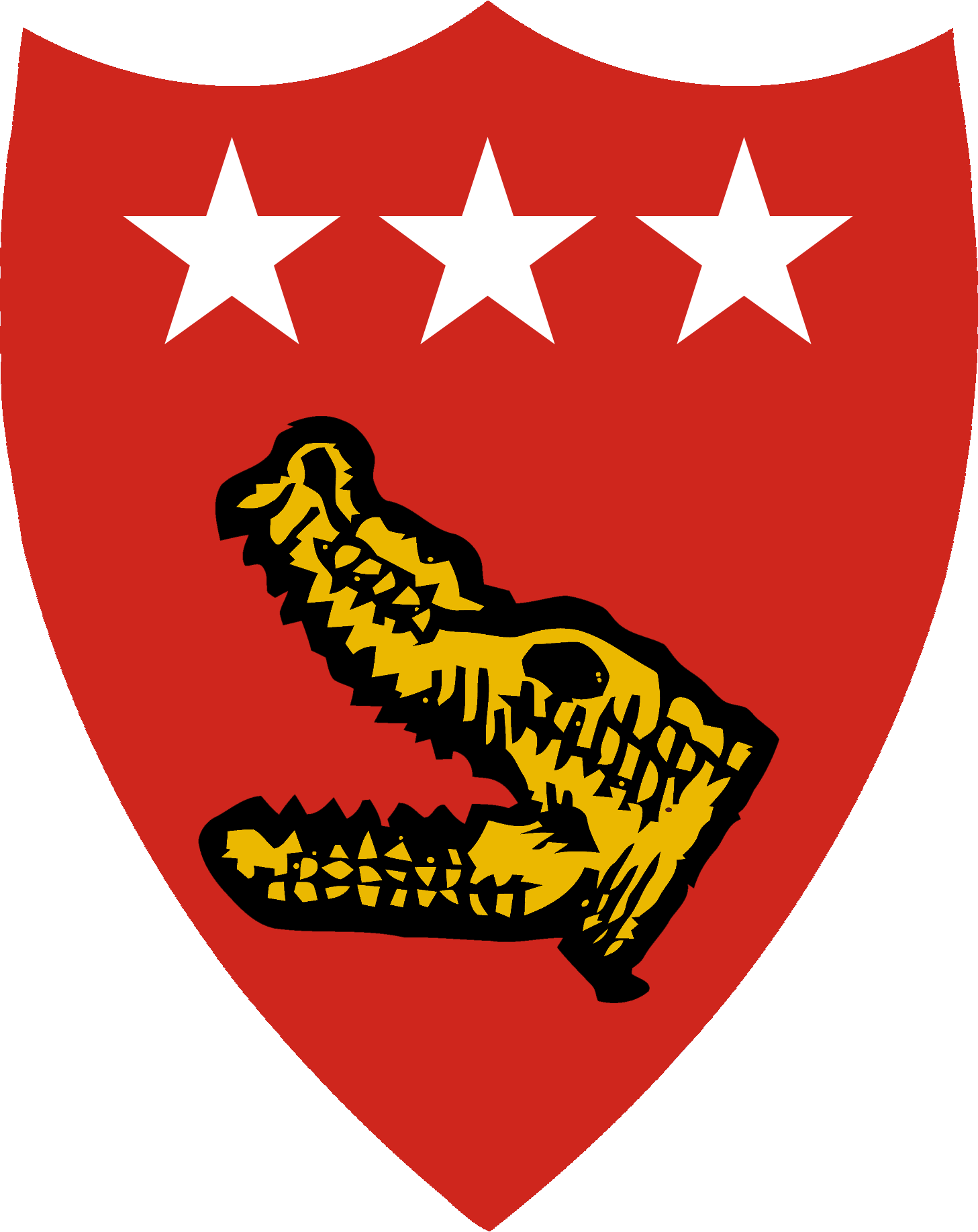
Lieutenant General
: Chief of Staff: Brig. Gen.



 10th Marine Regiment (Artillery)
::: Commanding Officer: Col. Raphael Griffin
::: Executive Officer: Lt. Col. Ralph E. Forsyth
:::: 1st Battalion (Lt. Col. Presley M. Rixey)
:::: 2nd Battalion (Lt. Col. George R. E. Shell)
:::: 3rd Battalion (Maj. William L. Crouch)
:::: 4th Battalion (Lt. Col. Kenneth A. Jorgensen)
:::
10th Marine Regiment (Artillery)
::: Commanding Officer: Col. Raphael Griffin
::: Executive Officer: Lt. Col. Ralph E. Forsyth
:::: 1st Battalion (Lt. Col. Presley M. Rixey)
:::: 2nd Battalion (Lt. Col. George R. E. Shell)
:::: 3rd Battalion (Maj. William L. Crouch)
:::: 4th Battalion (Lt. Col. Kenneth A. Jorgensen)
:::  18th Marine Regiment (Engineer)
::: Commanding Officer: Lt. Col. Ewart S. Laue
:::: 1st Battalion, 18th Marines (Lt. Col. August L. Vogt)
:::: 2nd Battalion, 18th Marines (Lt. Col. Chester J. Salazar)
::: Attached units
:::: 1st Battalion, 29th Marine Regiment (Lt. Col. Guy E. Tannyhill; Lt. Col.
18th Marine Regiment (Engineer)
::: Commanding Officer: Lt. Col. Ewart S. Laue
:::: 1st Battalion, 18th Marines (Lt. Col. August L. Vogt)
:::: 2nd Battalion, 18th Marines (Lt. Col. Chester J. Salazar)
::: Attached units
:::: 1st Battalion, 29th Marine Regiment (Lt. Col. Guy E. Tannyhill; Lt. Col.
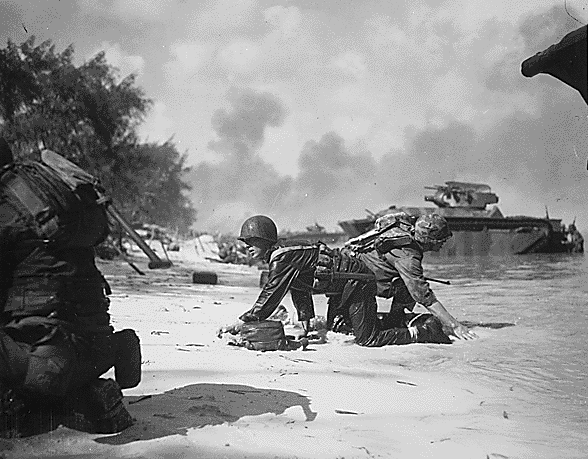
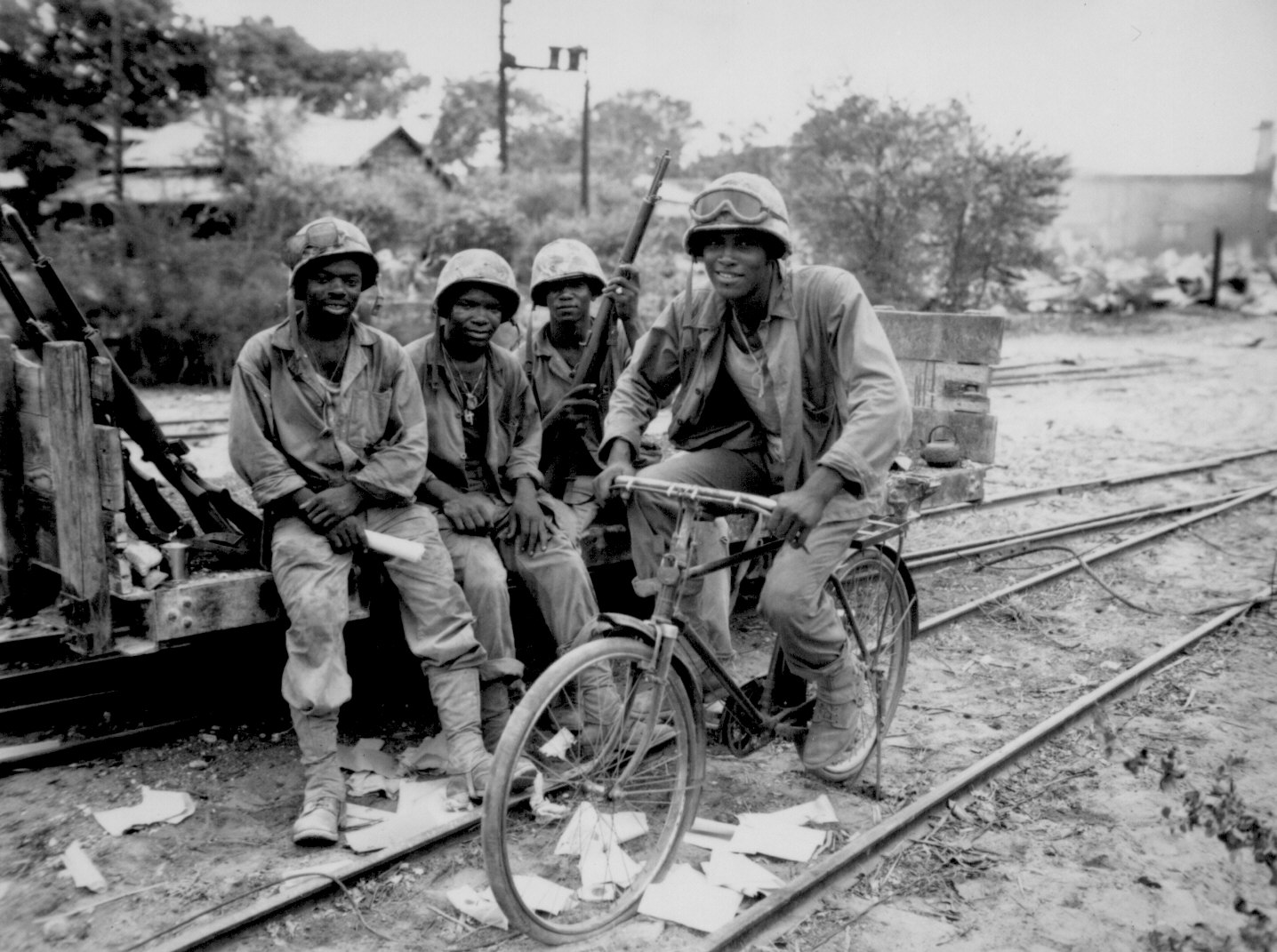
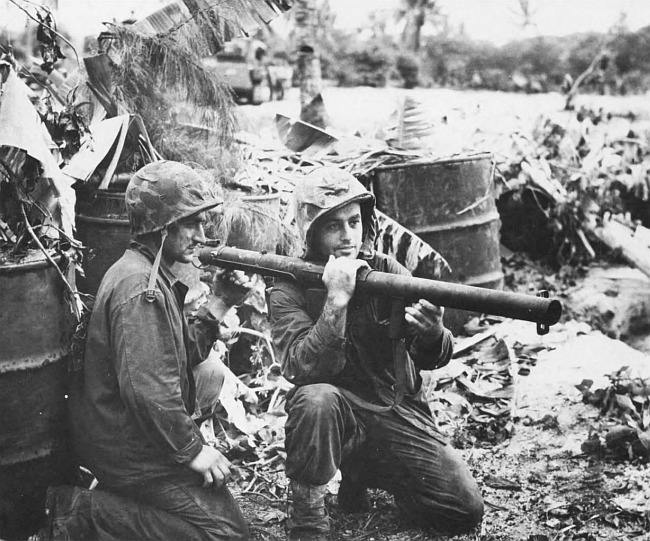 :
: 


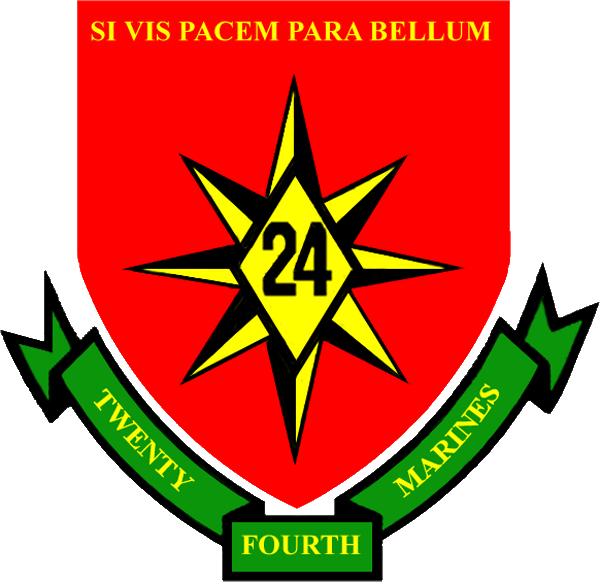
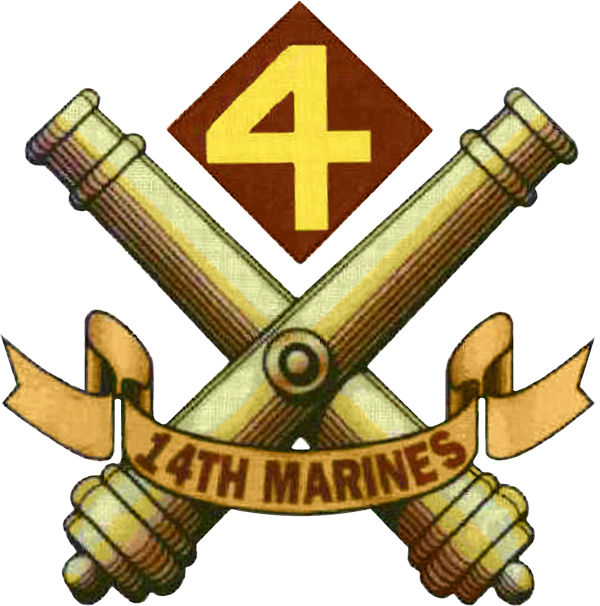 14th Marine Regiment (Artillery)
::: Colonel Louis G. DeHaven
::: Exec. Ofc.: Lt. Col. Randall M. Victory
:::: 1st Battalion (Lt. Col. Harry J. Zimmer)
:::: 2nd Battalion (Lt. Col. George B. Wilson Jr.)
:::: 3rd Battalion (Maj. Robert E. MacFarlane)
:::: 4th Battalion (Lt. Col.
14th Marine Regiment (Artillery)
::: Colonel Louis G. DeHaven
::: Exec. Ofc.: Lt. Col. Randall M. Victory
:::: 1st Battalion (Lt. Col. Harry J. Zimmer)
:::: 2nd Battalion (Lt. Col. George B. Wilson Jr.)
:::: 3rd Battalion (Maj. Robert E. MacFarlane)
:::: 4th Battalion (Lt. Col.  20th Marine Regiment (Engineer)
::: Lt. Colonel Nelson K. Brown
::: Exec. Ofc.: Capt. William M. Anderson
:::: 1st Battalion (Maj. Richard G. Ruby)
:::: 2nd Battalion (Maj. John H. Partridge)
:: Attached units
::: 708th Amphibian Tank Battalion (Army)
::: 773rd Amphibian Tractor Battalion (Army)
::: 534th Amphibian Tractor Battalion (Army)
20th Marine Regiment (Engineer)
::: Lt. Colonel Nelson K. Brown
::: Exec. Ofc.: Capt. William M. Anderson
:::: 1st Battalion (Maj. Richard G. Ruby)
:::: 2nd Battalion (Maj. John H. Partridge)
:: Attached units
::: 708th Amphibian Tank Battalion (Army)
::: 773rd Amphibian Tractor Battalion (Army)
::: 534th Amphibian Tractor Battalion (Army)
:: Major General
:: Major General Sanderford Jarman (24 Jun thru 28 Jun)
:: Major General George W. Griner (after 28 Jun)
:: ''Blue beaches'' ::: Infantry :::: 105th Infantry Regiment :::: 106th Infantry Regiment :::: 165th Infantry Regiment ::: Artillery :::: 104th Field Artillery Battalion :::: 105th Field Artillery Battalion :::: 106th Field Artillery Battalion :::: 249th Field Artillery Battalion ::: Armor :::: 762nd Tank Battalion :::: 766th Tank Battalion ::: Engineer :::: 102nd Engineer Combat Battalion :::: 502nd Engineer Combat Battalion ::: Navy :::: UDT 5 :::: UDT 6
 Central Pacific Area Fleet HQRottman, p. 91
Central Pacific Area Fleet HQRottman, p. 91
Vice Admiral
Chief of staff: Rear Adm. Hideo Yano (seppuku 7 July) : Thirty-first Army : Lieutenant General
Appendix A - Tactical Units of Northern Troops and Landing Force on Saipan
{{DEFAULTSORT:Saipan, Battle of, Order of Battle World War II orders of battle World War II operations and battles of the Pacific theatre United States Marine Corps in World War II Battles and operations of World War II involving Japan Saipan
 On 15 June 1944,
On 15 June 1944, United States Marine
The United States Marine Corps (USMC), also referred to as the United States Marines, is the maritime land force service branch of the United States Armed Forces responsible for conducting expeditionary and amphibious operations through combi ...
forces landed on the southwest coast of the island of Saipan in the central Marianas
The Mariana Islands (; also the Marianas; in Chamorro: ''Manislan MariĂĄnas'') are a crescent-shaped archipelago comprising the summits of fifteen longitudinally oriented, mostly dormant volcanic mountains in the northwestern Pacific Ocean, betw ...
chain; these were followed a day later by US Army
The United States Army (USA) is the land service branch of the United States Armed Forces. It is one of the eight U.S. uniformed services, and is designated as the Army of the United States in the U.S. Constitution.Article II, section 2, cla ...
forces. This invasion was part of Operation Forager
The Mariana and Palau Islands campaign, also known as Operation Forager, was an offensive launched by United States forces against Imperial Japanese forces in the Mariana Islands and Palau in the Pacific Ocean between June and November 1944 dur ...
, an effort to recapture the entire Marianas chain from the Empire of Japan
The also known as the Japanese Empire or Imperial Japan, was a historical nation-state and great power that existed from the Meiji Restoration in 1868 until the enactment of the post-World War II 1947 constitution and subsequent fo ...
.
The island had been a Japanese possession since it was captured by the Imperial Japanese Army
The was the official ground-based armed force of the Empire of Japan from 1868 to 1945. It was controlled by the Imperial Japanese Army General Staff Office and the Ministry of the Army, both of which were nominally subordinate to the Emperor o ...
during World War I
World War I (28 July 1914 11 November 1918), often abbreviated as WWI, was one of the deadliest global conflicts in history. Belligerents included much of Europe, the Russian Empire, the United States, and the Ottoman Empire, with fightin ...
. As military conflict with the United States became increasingly likely during the 1930s, Japan expended great effort in fortifying Saipan. In mid-1944, nearly 30,000 troops were based on the island, almost double the estimates of US intelligence.
US forces declared Saipan secure on 9 July 1944.
United States
Naval forces
United States Pacific Fleet
The United States Pacific Fleet (USPACFLT) is a theater-level component command of the United States Navy, located in the Pacific Ocean. It provides naval forces to the Indo-Pacific Command. Fleet headquarters is at Joint Base Pearl Harbor†...
Admiral
Chester W. Nimitz
Chester William Nimitz (; February 24, 1885 – February 20, 1966) was a fleet admiral in the United States Navy. He played a major role in the naval history of World War II as Commander in Chief, US Pacific Fleet, and Commander in C ...
HQ at Pearl Harbor
Pearl Harbor is an American lagoon harbor on the island of Oahu, Hawaii, west of Honolulu. It was often visited by the Naval fleet of the United States, before it was acquired from the Hawaiian Kingdom by the U.S. with the signing of the Re ...
: United States Fifth Fleet
The Fifth Fleet is a numbered fleet of the United States Navy. It has been responsible for naval forces in the Persian Gulf, Red Sea, Arabian Sea, and parts of the Indian Ocean since 1995 after a 48-year hiatus. It shares a commander and headq ...
: Admiral Raymond A. Spruance in heavy cruiser ''Indianapolis'' :: Joint Expeditionary Force (Task Force 51)
:: Vice Admiral
Richmond Kelly Turner
Admiral Richmond Kelly Turner (May 27, 1885 – February 12, 1961), commonly known as Admiral Kelly Turner, served in the United States Navy during World War II, and is best known for commanding the Amphibious Force during the campaign across ...
in amphibious command ship '' Rocky Mount''
::: Northern Attack Force (Task Force 52 – Saipan and Tinian)::: Vice Admiral
Turner
Turner may refer to:
People and fictional characters
*Turner (surname), a common surname, including a list of people and fictional characters with the name
* Turner (given name), a list of people with the given name
*One who uses a lathe for turni ...
::: Southern Attack Force (Task Force 53 – Guam)::: Vice Admiral Richard L. Conolly in amphibious command ship '' Appalachian''
Ground forces
 Expeditionary Troops (Task Force 56)
Expeditionary Troops (Task Force 56)Lieutenant General Holland M. "Howlin' Mad" Smith : Chief of Staff: Brig. Gen.
Graves B. Erskine
General Graves Blanchard Erskine (June 28, 1897May 21, 1973) was a United States Marine Corps officer who led the 3rd Marine Division (United States), 3rd Marine Division during the Battle of Iwo Jima in World War II.
Early life and education
...
: Personnel Officer (G-1): Lt. Col. Albert F. Metze
: Intelligence Officer (G-2): Col. St. Julien R. Marshall
: Operations Officer (G-3): Col. John C. McQueen
John Crawford McQueen (July 5, 1899 – December 7, 1985) was a decorated officer of the United States Marine Corps with the rank of lieutenant general, who served as high staff officer during Pacific War. He later served as Director of Ma ...
: Logistics Officer (G-4): Col. Raymond E. Knapp
: Plans Officer (G-5): Col. Joseph T. Smith
:: Northern Troops and Landing Force (Task Group 56.1 – Tinian and Saipan)
:: Consisting of V Amphibious Corps
The V Amphibious Corps (VAC) was a formation of the United States Marine Corps which was composed of the 3rd, 4th and 5th Marine Divisions in World War II. The three divisions were the amphibious landing force for the United States Fifth Fleet ...
:: Southern Troops and Landing Force (Task Group 56.2 – Guam)
:: Consisting of III Amphibious Corps
III Marine Expeditionary Force (III MEF) is a formation of the Marine Air-Ground Task Force of the United States Marine Corps. It is forward-deployed and able to rapidly conduct operations across the spectrum from humanitarian assistance and d ...

V Amphibious Corps
The V Amphibious Corps (VAC) was a formation of the United States Marine Corps which was composed of the 3rd, 4th and 5th Marine Divisions in World War II. The three divisions were the amphibious landing force for the United States Fifth Fleet ...
Lieutenant General
Holland M. Smith
Holland McTyeire "Howlin' Mad" Smith, KCB (April 20, 1882 – January 12, 1967) was a general in the United States Marine Corps during World War II. He is sometimes called the "father" of modern U.S. amphibious warfare. His nickname, "Howl ...
: Chief of Staff: Brig. Gen.
Graves B. Erskine
General Graves Blanchard Erskine (June 28, 1897May 21, 1973) was a United States Marine Corps officer who led the 3rd Marine Division (United States), 3rd Marine Division during the Battle of Iwo Jima in World War II.
Early life and education
...
: XXIV Corps Artillery (Brig. Gen. Arthur M. Harper)
:: 1st Provisional Gun Group
:: 225th Field Artillery Howitzer Group
Left beaches
:2nd Marine Division
The 2nd Marine Division (2nd MARDIV) is a division of the United States Marine Corps, which forms the ground combat element of the II Marine Expeditionary Force (II MEF). The division is based at Marine Corps Base Camp Lejeune, North Carolina ...
(21,746 officers and enlisted)
:: Major General Thomas E. Watson
Thomas Edward Watson (September 5, 1856 – September 26, 1922) was an American politician, attorney, newspaper editor and writer from Georgia. In the 1890s Watson championed poor farmers as a leader of the Populist Party, articulating an a ...
:: Asst. Div. Cmdr.: Brig. Gen. Merritt A. Edson
Major General Merritt Austin Edson, Sr. (April 25, 1897 – August 14, 1955), known as "Red Mike", was a general in the United States Marine Corps. Among the decorations he received were the Medal of Honor, two Navy Crosses, the Silver Star, and ...
:: ''Red beaches''
::: 
6th Marine Regiment
The 6th Marine Regiment (also referred to as "6th Marines") is an infantry regiment of the United States Marine Corps based at Marine Corps Base Camp Lejeune, North Carolina. The regiment falls under the command of the 2nd Marine Division (Unite ...
::: Commanding Officer: Col. James P. Riseley
::: Executive Officer: Lt. Col. Kenneth F. McLeod
:::: 1st Battalion (Lt. Col. William K. Jones
William Kenefick Jones (October 23, 1916 – April 15, 1998) was a United States Marine Corps lieutenant general and a highly decorated veteran of three wars, receiving the Navy Cross, the Silver Star, the Bronze Star, and the Purple Heart. He wa ...
)
:::: 2nd Battalion (Lt. Col. Raymond L. Murray
Major General Raymond Leroy Murray (January 30, 1913 – November 11, 2004) was a highly decorated United States Marine Corps officer who earned two Navy Crosses, one during World War II and a second during the Korean War. He retired from activ ...
)
:::: 3rd Battalion (Lt. Col. John W. Easley)
:: ''Green beaches''
::: 
8th Marine Regiment
The 8th Marine Regiment was an infantry regiment of the United States Marine Corps. When last active, it was based at Marine Corps Base Camp Lejeune, North Carolina, and fell under the command of the 2nd Marine Division and the II Marine Exped ...
::: Commanding Officer: Col. Clarence R. Wallace
::: Executive Officer: Lt. Col. Jack P. Juhan
Jack Phillip Juhan (December 28, 1904 – February 24, 2002) was a decorated officer of the United States Marine Corps, who reached the rank of major general. He is most noted for his service as executive officer of 8th Marine Regiment during the ...
:::: 1st Battalion (Lt. Col. Lawrence C. Hays Jr.)
:::: 2nd Battalion (Lt. Col. Henry P. Crowe)
:::: 3rd Battalion (Lt. Col. John C. Miller Jr.)
:: ''Floating reserve''
::: 
2nd Marine Regiment
The 2nd Marine Regiment is an infantry regiment of the United States Marine Corps. They are based at Marine Corps Base Camp Lejeune, North Carolina and fall under the command of the 2nd Marine Division and the II Marine Expeditionary Force.
C ...
::: Commanding Officer: Col. Walter J. Stuart
::: Executive Officer: Lt. Col. John H. Griebel
John Houghton Griebel (June 28, 1901 - March 10, 1969) was a decorated officer in the United States Marine Corps with the rank of Brigadier general (United States), Brigadier general. A veteran of United States occupation of Nicaragua, Nicaraguan ...
:::: 1st Battalion (Lt. Col. Wood B. Kyle
Wood Barbee Kyle (March 3, 1915 – October 25, 2000) was a highly decorated officer of the United States Marine Corps with the rank of major general. Kyle received two Silver Stars for gallantry in action during Pacific Campaign in World War II ...
)
:::: 2nd Battalion (Lt. Col. Richard C. Nutting)
:::: 3rd Battalion (Lt. Col. Arnold F. Johnston)
:: ''Landed after D-Day''
:::  10th Marine Regiment (Artillery)
::: Commanding Officer: Col. Raphael Griffin
::: Executive Officer: Lt. Col. Ralph E. Forsyth
:::: 1st Battalion (Lt. Col. Presley M. Rixey)
:::: 2nd Battalion (Lt. Col. George R. E. Shell)
:::: 3rd Battalion (Maj. William L. Crouch)
:::: 4th Battalion (Lt. Col. Kenneth A. Jorgensen)
:::
10th Marine Regiment (Artillery)
::: Commanding Officer: Col. Raphael Griffin
::: Executive Officer: Lt. Col. Ralph E. Forsyth
:::: 1st Battalion (Lt. Col. Presley M. Rixey)
:::: 2nd Battalion (Lt. Col. George R. E. Shell)
:::: 3rd Battalion (Maj. William L. Crouch)
:::: 4th Battalion (Lt. Col. Kenneth A. Jorgensen)
:::  18th Marine Regiment (Engineer)
::: Commanding Officer: Lt. Col. Ewart S. Laue
:::: 1st Battalion, 18th Marines (Lt. Col. August L. Vogt)
:::: 2nd Battalion, 18th Marines (Lt. Col. Chester J. Salazar)
::: Attached units
:::: 1st Battalion, 29th Marine Regiment (Lt. Col. Guy E. Tannyhill; Lt. Col.
18th Marine Regiment (Engineer)
::: Commanding Officer: Lt. Col. Ewart S. Laue
:::: 1st Battalion, 18th Marines (Lt. Col. August L. Vogt)
:::: 2nd Battalion, 18th Marines (Lt. Col. Chester J. Salazar)
::: Attached units
:::: 1st Battalion, 29th Marine Regiment (Lt. Col. Guy E. Tannyhill; Lt. Col. Rathvon M. Tompkins
Rathvon McClure Tompkins (August 23, 1912 – September 17, 1999) was a highly decorated United States Marine Corps major general. He saw combat in World War II, the Korean War, the Vietnam War and led Marine units during the Dominican Civil War ...
; Lt. Col. Jack P. Juhan
Jack Phillip Juhan (December 28, 1904 – February 24, 2002) was a decorated officer of the United States Marine Corps, who reached the rank of major general. He is most noted for his service as executive officer of 8th Marine Regiment during the ...
)
:::: 715th Amphibian Tractor Battalion (Army)
Right beaches


 :
: 4th Marine Division
The 4th Marine Division is a reserve division in the United States Marine Corps. It was raised in 1943 for service during World War II, and subsequently fought in the Pacific against the Japanese. Deactivated after the war, the division was re-fo ...
(21,618 officers and enlisted)
:: Major General Harry Schmidt Harry Schmidt may refer to:
* Harry Schmidt (USMC) (1886–1968), commanded the Fourth Marine Division in the Pacific during World War II
* Harry Schmidt (mathematician) (1894–1951), German applied mathematician
* Harry Schmidt (pentathlete) (191 ...
:: Asst. Div. Cmdr.: Brig. Gen. Samuel C. Cumming
Samuel Calvin Cumming (October 14, 1895 – January 14, 1983) was a highly decorated officer of the United States Marine Corps with the rank of major general. He is most noted for his service as assistant division commander of the 4th Marine ...
:: ''Blue beaches''
::: 
23rd Marine Regiment
The 23rd Marine Regiment (23rd Marines) is a reserve infantry regiment of the United States Marine Corps. It is headquartered in San Bruno, California and falls under the command of the 4th Marine Division and the Marine Forces Reserve.
The reg ...
::: Colonel Louis R. Jones
Louis Reeder Jones (June 29, 1895 – February 2, 1973) was a highly decorated major general in the United States Marine Corps during World War II. He was a recipient of Navy Cross for his service with 23rd Marine Regiment during Saipan and Tini ...
::: Exec. Ofc.: Lt. Col. John R. Lanigan
:::: 1st Battalion (Lt. Col. Ralph Haas)
:::: 2nd Battalion (Lt. Col. Edward J. Dillon)
:::: 3rd Battalion (Maj. John J. Cosgrove)
:: ''Yellow beaches''
::: 
25th Marine Regiment
The 25th Marine Regiment (25th Marines) is one of two infantry regiments in the 4th Marine Division of the United States Marine Corps. From its headquarters in Fort Devens, Massachusetts, the regiment commands fifteen training centers in nine sta ...
::: Colonel Merton J. Batchelder
::: Exec. Ofc.: Lt. Col. Clarence J. O'Donnell
:::: 1st Battalion (Lt. Col. Hollis U. Mustain)
:::: 2nd Battalion (Lt. Col. Lewis C. Hudson)
:::: 3rd Battalion (Lt. Col. Justice M. Chambers
Colonel Justice Marion Chambers (February 2, 1908 – July 29, 1982) was a United States Marine Corps officer who received the Medal of Honor for actions in World War II during the Iwo Jima campaign.
Biography
Chambers was born February ...
)
:: ''Floating reserve''
::: 
24th Marine Regiment
The 24th Marine Regiment (24th Marines) was one of three infantry regiments in the 4th Marine Division of the United States Marine Corps. Its last headquarters before being deactivated on 9 September 2013 was in Kansas City, Missouri.
Mission ...
::: Colonel Franklin A. Hart
::: Exec. Ofc.: Lt. Col. Austin R. Brunelli
:::: 1st Battalion (Lt. Col. Robert N. Fricke)
:::: 2nd Battalion (Lt. Col. Richard Rothwell)
:::: 3rd Battalion (Lt. Col. Otto Lessing)
:: ''Landed after D-Day''
:::  14th Marine Regiment (Artillery)
::: Colonel Louis G. DeHaven
::: Exec. Ofc.: Lt. Col. Randall M. Victory
:::: 1st Battalion (Lt. Col. Harry J. Zimmer)
:::: 2nd Battalion (Lt. Col. George B. Wilson Jr.)
:::: 3rd Battalion (Maj. Robert E. MacFarlane)
:::: 4th Battalion (Lt. Col.
14th Marine Regiment (Artillery)
::: Colonel Louis G. DeHaven
::: Exec. Ofc.: Lt. Col. Randall M. Victory
:::: 1st Battalion (Lt. Col. Harry J. Zimmer)
:::: 2nd Battalion (Lt. Col. George B. Wilson Jr.)
:::: 3rd Battalion (Maj. Robert E. MacFarlane)
:::: 4th Battalion (Lt. Col. Carl A. Youngdale
Carl Albert Youngdale (June 23, 1912 – March 8, 1993) was a highly decorated officer of the United States Marine Corps with the rank of major general. As an artillery officer, he took part in the three major conflicts of the 20th century and co ...
)
::: Landed D+1
: 27th Infantry Division (Army) (16,404 officers and enlisted):: Major General
Ralph C. Smith
Major General Ralph Corbett Smith (November 27, 1893 – January 21, 1998) was a senior officer of the United States Army. After receiving early training as a pilot from Orville Wright he served Brigadier General John J. Pershing's army agai ...
(thru 24 Jun) :: Major General Sanderford Jarman (24 Jun thru 28 Jun)
:: Major General George W. Griner (after 28 Jun)
:: ''Blue beaches'' ::: Infantry :::: 105th Infantry Regiment :::: 106th Infantry Regiment :::: 165th Infantry Regiment ::: Artillery :::: 104th Field Artillery Battalion :::: 105th Field Artillery Battalion :::: 106th Field Artillery Battalion :::: 249th Field Artillery Battalion ::: Armor :::: 762nd Tank Battalion :::: 766th Tank Battalion ::: Engineer :::: 102nd Engineer Combat Battalion :::: 502nd Engineer Combat Battalion ::: Navy :::: UDT 5 :::: UDT 6
Japan
 Central Pacific Area Fleet HQRottman, p. 91
Central Pacific Area Fleet HQRottman, p. 91Vice Admiral
Chūichi Nagumo
ChĹ«ichi Nagumo (, ''Nagumo ChĹ«ichi''; 25 March 1887 – 6 July 1944) was an admiral in the Imperial Japanese Navy (IJN) during World War II. Nagumo led Japan's main carrier battle group, the ''Kido Butai'', in the attack on Pearl Harbor, t ...
(self-inflicted gunshot 6 July)Chief of staff: Rear Adm. Hideo Yano (seppuku 7 July) : Thirty-first Army : Lieutenant General
Hideyoshi Obata
was a general in the Imperial Japanese Army in World War II.
Biography
Obata was the fifth son of a Chinese language scholar from Osaka prefecture. He attended military preparatory schools and graduated from the 23rd class of the Imperial Japa ...
(on inspection tour of Guam during battle; seppuku there 11 August)
: 14th Air Fleet
:: Defenses of Saipan
:: Lieutenant General Yoshitsugu Saito (seppuku 7 July)
:: Approx. 25,500 army and 6,200 navy personnel
::: 43rd Division
:::: 118th Infantry Regiment
:::: 135th Infantry Regiment
:::: 136th Infantry Regiment
::: ''Divisional support''
:::: 47th Independent Mixed Brigade
:::: 316th Independent Infantry Battalion
:::: 317th Independent Infantry Battalion
:::: 318th Independent Infantry Battalion
::: Other units
:::: 3rd Independent Mountain Artillery Regiment
:::: 9th Tank Regiment (of 1st Tank Division)
:::: 3rd Battalion, 9th Independent Mixed Regiment
:::: 1st Battalion, 18th Infantry Regiment
:::: 25th Antiaircraft Artillery Regiment
:::: 7th Independent Engineer Battalion
:::: 14th Independent Mortar Battalion
:::: 17th Independent Mortar Battalion
:::: ''Miscellaneous straggler units''
See also
Orders of battle involving United States Marine forces in the Pacific Theatre ofWorld War II
World War II or the Second World War, often abbreviated as WWII or WW2, was a world war that lasted from 1939 to 1945. It involved the vast majority of the world's countries—including all of the great powers—forming two opposin ...
:
* Battle of Guadalcanal order of battle
The Guadalcanal Campaign, called Operation ''Watchtower'', was the first major Allied offensive in the Pacific Theater of Operations in World War II. The campaign lasted from the initial American landings on 7 August 1942 until the final ...
* Battle of Tarawa order of battle
On 10 November, 1943, men of the United States Marine Corps invaded the island of Betio, located at the southwest corner of Tarawa Atoll in the Gilbert Islands chain in the Central Pacific. This invasion, known as Operation Galvanic, was a ph ...
* Guam (1944) order of battle
* Battle of Leyte opposing forces
* Battle of Peleliu opposing forces
* Battle of Iwo Jima order of battle
On February 19, 1945, men of the United States Marine Corps invaded the island of Iwo Jima, part of the Volcano Islands chain, in the North Pacific. This invasion, known as Battle of Iwo Jima, Operation ''Detachment'', was a phase of the Pacifi ...
* Okinawa ground order of battle
The American battle of Okinawa, invasion of the island of Okinawa, codenamed Operation Iceberg, took place 1 April 1945. The Japanese military was determined to inflict a casualty rate so high that the U.S. government would choose not to invade t ...
Notes
References
Bibliography
* * * * *External links
Appendix A - Tactical Units of Northern Troops and Landing Force on Saipan
{{DEFAULTSORT:Saipan, Battle of, Order of Battle World War II orders of battle World War II operations and battles of the Pacific theatre United States Marine Corps in World War II Battles and operations of World War II involving Japan Saipan